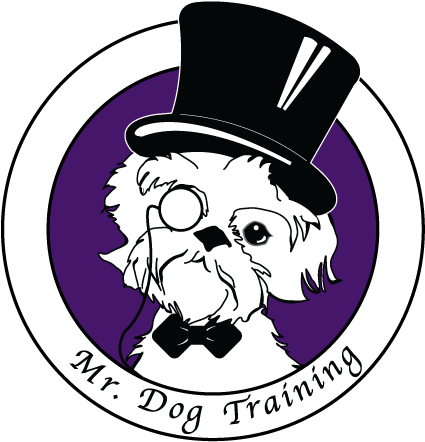Surviving Canine Adolescence; It’s Like Nailing Jello to a Tree
Shall we have a quick chat about adolescent dogs????
Most of my Basic classes are usually inundated with adolescence dogs. Adolescence is the time when dog guardians realize that they no longer have a little soft puppy who sleeps most of the day and instead a velociraptor who is hell bent on destroying everything in their path and will take no prisoners.
The result is humans and adolescent dogs who are having a hard time.
Here’s your adolescent dog mantra....”KEEP THEM GETTING THINGS RIGHT”!
Many folks put all this wonderful work into their puppies and have an toolbox full of lovely behaviors. Then, SLAM, adolescence hits like a Mac truck. That puppy who sat when you just looked at them, who had an amazing 50 foot recall and wouldn’t waiver their eye contact on you even if a poodle rode by on a scooter wearing a tutu, is now never sitting, not coming when called, at even 10 feet, and, oh boy a scooter and a poodle!
So we make things easier to KEEP THEM GETTING IT RIGHT. We lure into a sit, or even better, don’t even ask for one and just start reinforcing them responding to their name, we practice 5 or even 3 foot recalls on a line, and keep that scooter riding poodle as far away from us as possible while rewarding eye contact.
Otherwise we start repeating our cues, stop using our marker word, they get frustrated and we get frustrated, and the word stubborn is thrown around like glitter at a bachelorette party.
An adolescence’s body is changing faster than fall weather in Maine. (Duh, do YOU remember being an adolescent? Totally the worst.) During canine adolescence, changing sex hormones affect the animals stress responses. Adolescent dogs have a decreased ability to process information they are receiving from the environment including the presence of dogs, vehicles, people, or really anything around them.
The connectivity between the frontal cortex (responsible for decision making) and amygdala (responsible for emotional processing) decreases, resulting in less behavioral control. We see increased risk taking and more sensitivity to fear.
So what does this mean? This could mean that what was once no big deal to the dog now feels scary; what was once easy to do is now stressful; what once made sense is now confusing. At times, the world can feel like ‘too much’ for the adolescent dog and it is.
So what is a velociraptor guardian to do?
Train the dog you have in front of you. Not the puppy you had 3 weeks ago, not the dog you’ll have in 2 years. The struggling adolescent you have right in front of you. Don’t be a stubborn human and insist that they do things they can no longer do just because they used to.
KEEP THEM GETTING IT RIGHT, and not only will you come out on the other side even better then you were before it started and, most importantly, with your relationship and communication with your dog intact.
Sara Sokol is owner of Mr. Dog Training in Brunswick Maine; A positive reinforcement dog training facility, offering both virtual and in person classes, that has been voted best training in Maine for 8 years in a row..
